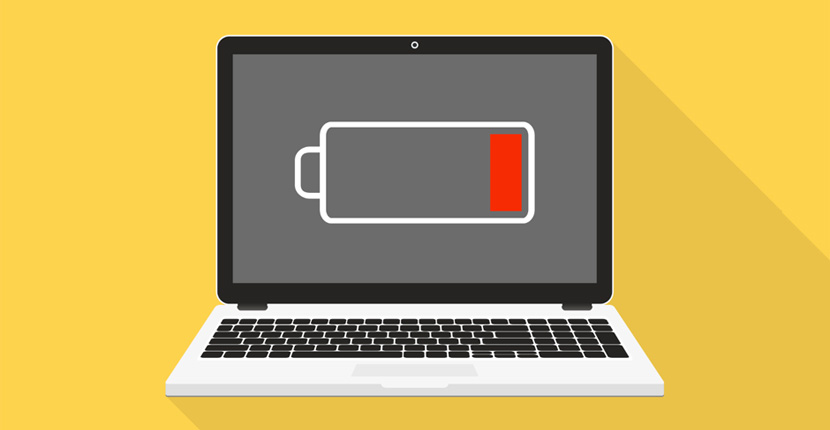Navigating the Power Drain: Understanding Battery Drain in Laptops and Crafting Effective Solutions

In the fast-paced digital era, laptops serve as indispensable tools for work, communication, entertainment, and beyond. However, the convenience and portability offered by these devices come with a caveat: the dreaded phenomenon of battery drain. Whether you’re a student racing against a deadline, a professional navigating a hectic workday, or an enthusiast indulging in leisurely activities, rapid battery drain can disrupt your workflow and impede your productivity. In this comprehensive guide, we’ll delve into the intricacies of battery drain in laptops, explore its underlying causes, examine its detrimental effects, and most importantly, provide practical solutions to extend your laptop’s battery life and optimize its performance.
Unraveling the Mystery of Battery Drain:
Battery drain in laptops occurs when the device consumes power at a faster rate than it can be replenished, resulting in a decrease in battery life and runtime. This phenomenon can manifest in various ways, including:
- Shortened battery life between charges.
- Rapid depletion of battery percentage during use.
- Sudden shutdowns or loss of power.
- Inability to hold a charge over time.
Understanding the root causes of battery drain is essential for effectively addressing the issue and maximizing your laptop’s battery life.
Causes of Battery Drain:
Battery drain in laptops can be attributed to several factors, including:
- Background Processes: Unnecessary background processes and applications running in the background can consume CPU and memory resources, leading to increased power consumption and battery drain.
- Screen Brightness: High screen brightness settings can significantly impact battery life, as the display is one of the most power-hungry components of a laptop.
- Hardware Components: Certain hardware components, such as the CPU, GPU, and hard drive, can contribute to battery drain when operating at maximum performance levels or under heavy load.
- Wireless Connectivity: Wi-Fi, Bluetooth, and other wireless connections can drain battery life, especially when constantly searching for networks or maintaining active connections.
- Outdated Drivers or Firmware: Using outdated device drivers or firmware can result in suboptimal power management and inefficient resource utilization, leading to increased power consumption and battery drain.
- Overheating: Excessive heat generated by the laptop’s internal components can accelerate battery degradation and reduce overall battery life over time.
Crafting Effective Solutions:
To mitigate battery drain and optimize your laptop’s battery life, consider implementing the following solutions:
- Adjust Power Settings: Modify power settings in the operating system to prioritize energy efficiency and extend battery life. Lowering screen brightness, adjusting sleep and hibernation settings, and optimizing power plans can help conserve battery power.
- Manage Background Processes: Identify and close unnecessary background processes and applications to reduce CPU and memory usage, thereby minimizing power consumption and extending battery life.
- Optimize Wireless Connectivity: Disable Wi-Fi, Bluetooth, and other wireless connections when not in use to prevent unnecessary power drain. Additionally, prioritize wired connections whenever possible to conserve battery power.
- Update Drivers and Firmware: Ensure that device drivers, firmware, and BIOS are up to date to access performance optimizations and power management improvements that may enhance battery life.
- Monitor Battery Health: Use built-in battery diagnostics tools or third-party software to monitor battery health and performance. Regularly calibrate the battery and avoid exposing it to extreme temperatures to prolong its lifespan.
- Enable Power-Saving Features: Enable built-in power-saving features such as battery saver mode, adaptive brightness, and idle timeouts to reduce power consumption and extend battery life.
- Limit Resource-Intensive Tasks: Avoid running resource-intensive tasks, such as gaming or video editing, on battery power alone. Connect to a power source whenever possible to ensure optimal performance and minimize battery drain.
- Upgrade Hardware Components: Consider upgrading hardware components, such as the CPU, GPU, or SSD, to more energy-efficient models that consume less power and extend battery life.
Conclusion:
In conclusion, battery drain in laptops poses a significant challenge for users seeking to maximize productivity and efficiency while on the go. By understanding the root causes of battery drain and implementing effective solutions, users can extend their laptop’s battery life and optimize its performance for longer-lasting usage. Whether it’s adjusting power settings, managing background processes, or optimizing wireless connectivity, proactive measures are essential for preserving battery health and ensuring a seamless computing experience. So, don’t let battery drain drain your productivity—take action today to prolong your laptop’s battery life and keep it running smoothly for years to come.







